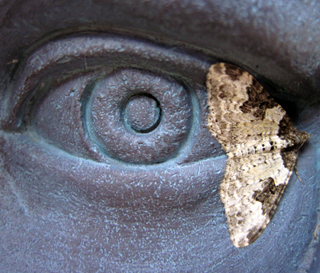 There are thought to be approximately 160,000 species of moth worldwide, with over 2500 species having been recorded in the British Isles. Carol Hughes has been recording and photographing some of the many species to be found right here in the Roseland.
There are thought to be approximately 160,000 species of moth worldwide, with over 2500 species having been recorded in the British Isles. Carol Hughes has been recording and photographing some of the many species to be found right here in the Roseland.
Moths belong to a group of insects which include the butterflies, the Order Lepidoptera. Fossils of moths have been found that may be 190 million years old, showing that moths evolved long before butterflies.

Most moths are nocturnal but you will see some in the day time. They have the same life cycle as butterflies; eggs, caterpillar, pupa, adult. Caterpillars, like their adult, form vary in size and colour.
So far at Ruan I have recorded 38 different moths: mostly ones that I have found in the kitchen after the door has been left open in the evening. Several have been recorded while out walking including Oak Eggar (Lasiocampa quercus), which at first I thought was a butterfly. It was constantly flitting all over the road and took a while to get a clear photograph of.
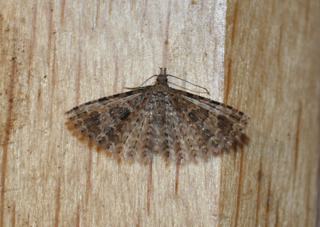
My most recent addition is Twenty-plume (Alucita hexadactyla), found in the kitchen. Measuring only 1.5 cm it is a micro moth. Its wings are made up of six ‘plumes’ or small feathers – so its common name is a bit mis-leading – and is very beautiful.
If you are out walking, the most commonmoth you are likely to see is the Common Carpet (Epirrhoe alternata).
In the garden, if you have Valerian or Buddleja you may be lucky enough to see the Hummingbird Hawk moth (Macroglossum stellatarum), as it flits about between the clusters of nectar-rich flowers.
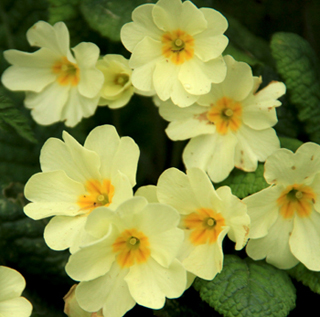
What to look out for this month in the Roseland – colourful flowers
Primrose season is already upon us. Look out for sprawling patches of these cheerily beautiful flowers (Primula vulgaris) brightening shady places under our Cornish hedges.
Not all of them are yellow either, some being naturally pink forms. Look out too for the bright green foliage and nodding purple flowers of Sweet violet (Viola odorata) wafting their soft scent on the breeze; a sure sign that spring has arrived.
Upcoming Wild Roseland Walks and Talks – dates for your diary
Note that all events are free but a small donation of £3 would be welcomed.
Saturday 18th March, 10.00am, Portscatho Fisherman’s Shelter. Led by David Hall.
Gerrans Bay is an important stopover for overwintering seabirds, such as Great Northern and Black Throated Divers. We’ll drive (car sharing arranged) to viewpoints around the bay to observe the range of species out there. Some short walking at each site, depending on the weather and where the birds are that day.
Wild Roseland Photographic Competition and Exhibition
29th and 30th April, Portscatho Memorial Hall, 10am – 4pm.
Enter this free competition for a chance to win fabulous prizes! Submit up to 4 photos of the Roseland, showing its wild natural beauty. Adults and children can enter. The rules are as follows:
- You must be a Roseland or Tregony resident
- Photos can be in colour or black and white, taken with camera, tablet or phone
- Digital adjustment is allowed
- Downloaded images from the internet are not allowed
- Printed images should be flush mounted or mounted on board.
- Images must not be larger than A3
Please provide your name, contact details, age if under 18, and a description of where and when the photo was taken on the back of the print. Submit your entries in an envelope, between March 25th and April 22nd, at one of the following drop-off points:
- St Mawes: Fudge & Moore
- Portscatho: Harbour Gallery
- Veryan: Ellerkey Gallery
- Ruan High Lanes: Da Bara Café
- Tregony: Just Perfection Hairdressers or Tregony Gallery
Photos will be judged and put on public display at Portscatho Memorial Hall on 29th and 30th April, as part of the Roseland Festival.
The Roseland Academy and its feeder schools will also be participating as part of a botany project involving artwork and photography. The theme for the children taking photos is “Close Encounters of the Natural Kind”.
Wildlife on the Farm
 Saturday 20th May, 10.00am, Churchtown Farm, Veryan.
Saturday 20th May, 10.00am, Churchtown Farm, Veryan.
A walk led by Mike Harrison.
Mike has been combining farming for a living and for wildlife for many years, in an area of great nature and landscape value between Veryan and Carne Beach. He will lead a walk around his farm to show what he has done and achieved for wildlife, and the range of farmland and coastal habitats he manages.
Big Seaweed Search
Sunday 25th June, 12.30 at Towan or Porthcurnick beach (to be confirmed)
Led by Chris Townsend.
Seaweed identification walk and practical session as part of the Natural History Museum and Marine Conservation Society’s annual Big Seaweed Search around the country, to gather data on the occurrence and trends of seaweeds. (Numbers limited to 12 so booking required)
Event Success!
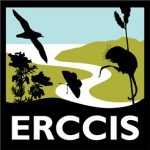 In January we had a presentation from Niki Clear of Cornwall Wildlife Trust on the work of the Environmental Records Centre for Cornwall and Isles of Scilly (ERCCIS) and their online wildlife recording system (ORKS – Online Recording Kernow and Scilly). This fascinating talk was well attended by 28, many of whom brought their laptops and tablets for live practice on the ORKS system.
In January we had a presentation from Niki Clear of Cornwall Wildlife Trust on the work of the Environmental Records Centre for Cornwall and Isles of Scilly (ERCCIS) and their online wildlife recording system (ORKS – Online Recording Kernow and Scilly). This fascinating talk was well attended by 28, many of whom brought their laptops and tablets for live practice on the ORKS system.
Picture and species of the month
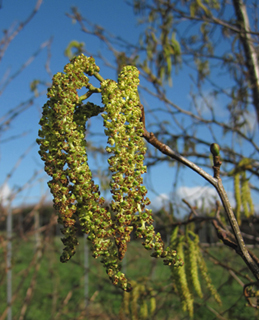 These are the catkins of Alder (Alnus glutinosa), one of our British native trees, showing that spring is surely underway. Alder is a member of the Betulaceae family, which includes the birches. Alder trees actively improve their surrounding soil fertitlity through their symbiotic relationship with a soil bacterium, Frankia alni. The bacterium helps fix nitrogen from the air into the tree’s root nodules. The tree feeds on the nitrogen nutrients, while sharing the sugars it produced from photosynthesis with the bacterium. You can find out more about the importance of Alder to wildlife and humans here:
These are the catkins of Alder (Alnus glutinosa), one of our British native trees, showing that spring is surely underway. Alder is a member of the Betulaceae family, which includes the birches. Alder trees actively improve their surrounding soil fertitlity through their symbiotic relationship with a soil bacterium, Frankia alni. The bacterium helps fix nitrogen from the air into the tree’s root nodules. The tree feeds on the nitrogen nutrients, while sharing the sugars it produced from photosynthesis with the bacterium. You can find out more about the importance of Alder to wildlife and humans here:
https://www.woodlandtrust.org.uk/visiting-woods/trees-woods-and-wildlife/british-trees/native-trees/alder/
Edited by Sarah Vandome.
Contributors:
Carol Hughes, Nick Coppin, David Hall, Sarah Vandome
Photography by Carol Hughes, Sarah Vandome.
References and links
Enjoy more Roseland wildlife and landscapes – visit Sarah Vandome’s Heart of Roseland Facebook feature:
https://www.facebook.com/HeartOfRoseland?ref=hl
Wild Roseland is a group of volunteers who care passionately about looking after the nature and landscape of the Roseland peninsula in south Cornwall. Through a number of initiatives and projects, the aim is to inspire and enhance the conservation of this special place for all.





I’d like to attend the Big Seaweed Search. Who should I contact about this?